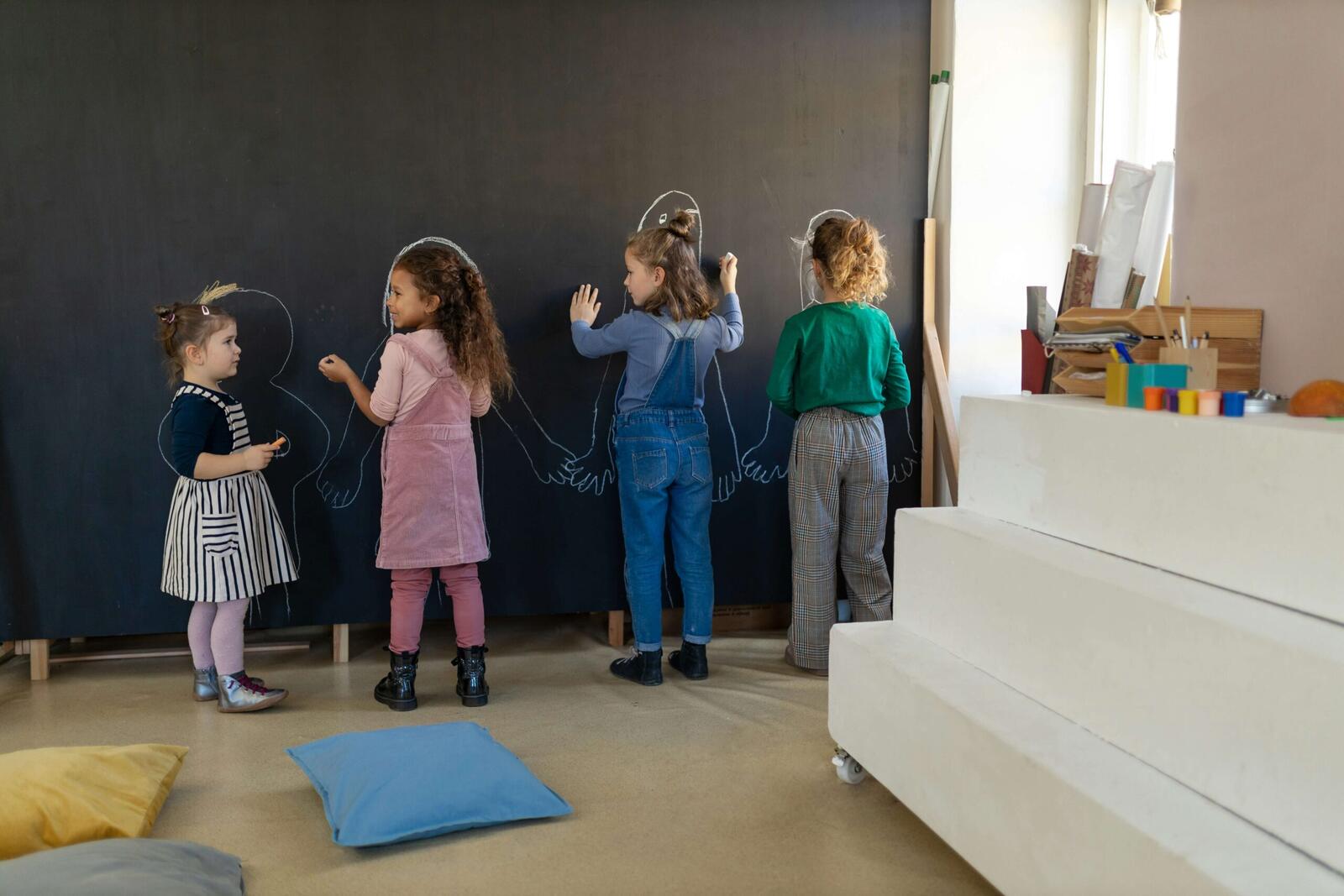With children across the globe becoming more tech-savvy than ever before, it’s not surprising that technology has become the norm across UK nurseries. From interactive apps to immersive digital experiences, the integration of technology in nursery education offers a plethora of opportunities to enhance learning outcomes and prepare young minds for the future.
Interactive Educational Apps
Educational apps tailored for young learners have surged in popularity tremendously, offering a wide range of engaging activities that have been designed to develop foundational skills.
These apps often include features like interactive games, puzzles, and storytelling elements that captivate children’s attention while promoting cognitive development, language acquisition, and fine motor skills. For children at nursery-age, these allow for a fun and engaging way to learn.
What Are The Benefits of Children’s Educational Apps?
- Encourages active participation and engagement
- Provides personalised learning experiences tailored to individual needs
- Offers instant feedback, reinforcing learning and encouraging persistence
- Supports the development of digital literacy skills essential for the 21st century
What Should be Considered Before Letting Your Child Use an App?
- Screen time management is crucial to ensure a balanced approach to technology use
- Quality and age-appropriateness of content should be carefully evaluated
- Supplemental offline activities and interactions are essential for holistic development
More from Guides
- Startups in 2025: Why Digital-Readiness Matters from Day One
- How to Use AI to Automate Your Startup’s HR
- How to Use AI to Help You Write a Business Plan
- Internet Sharing and Network Privacy: Should You Use a Proxy Server?
- 10 Tips to Go Viral in the Pet Industry
- Top Alternatives To Shopify
- Crypto Clash: Gate.io Vs. OKX
- 10 Things UK SMEs Should Know About Managed IT Support
Interactive Whiteboards and Smartboards
The use of interactive whiteboards and smartboards are common technological tools used across nurseries in the UK, meaning gone are the days of traditional chalkboards. These interactive display systems allow teachers to present engaging lessons enriched with multimedia content, including videos, animations, and interactive simulations. In nursery education, interactive whiteboards can be used to introduce concepts, illustrate stories, and facilitate group activities, fostering collaborative learning and stimulating young imaginations.
Benefits of Interactive Whiteboards
- Enhances visual and auditory learning experiences, catering to diverse learning styles
- Facilitates active participation and interaction among students
- Supports the integration of multimedia resources to enrich learning materials
- Promotes teacher flexibility and adaptability in lesson delivery
Considerations When Using Interactive Whiteboards in Nursery
- Proper training and support are essential for teachers to effectively utilise interactive whiteboard
- Technical issues or malfunctions may disrupt the learning process if not promptly addressed
- Balancing interactive activities with hands-on experiences is necessary for a well-rounded curriculum
Digital Cameras and Video Recorders
When children are given cameras and video recorders, they can feel empowered and independent. This also allows children to become creators and storytellers, capturing moments of exploration and discovery in the classroom and beyond. In nursery education, these multimedia tools can document children’s learning journeys, allowing them to reflect on their experiences and share their achievements with peers and families. Whether snapping photos of nature walks or recording role-play activities, digital cameras and video recorders promote creativity, self-expression, and communication skills.
Why Should Children Use Cameras or Recorders?
- Encourages creativity and self-expression through visual storytelling
- Provides opportunities for reflection and self-assessment
- Facilitates parent engagement by sharing glimpses of children’s daily activities
- Supports the development of digital media literacy skills
What Are Risks Of Giving Children Cameras?
- The most important aspect of children using cameras is that privacy and consent is paramount when capturing and sharing children’s images
- Proper storage and management of digital media files are necessary to ensure data security
- Guidance and supervision are essential to promote responsible use and respectful behaviour
In conclusion, the integration of technology in nursery education represents a transformative shift in the way children learn and engage with the world around them. The future of childcare and nursery education with new technology holds the promise of enhanced learning experiences, empowered educators, and thriving children prepared to navigate the complexities of the 21st century with confidence and competence. However, it is essential for educators and caregivers to maintain a thoughtful balance between digital experiences and hands-on interactions, ensuring that children receive a well-rounded and holistic education tailored to their needs and interests



